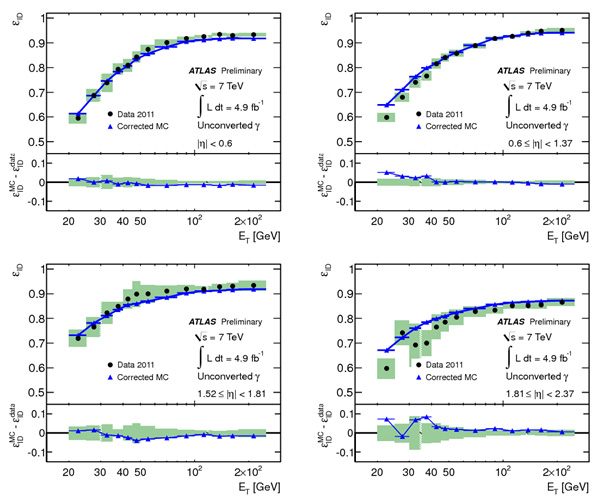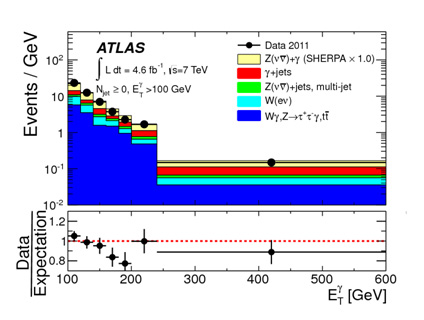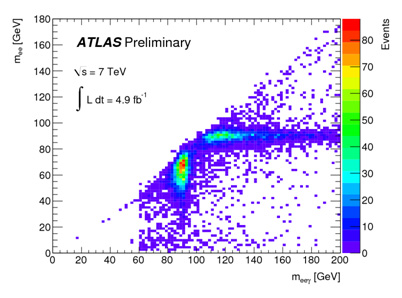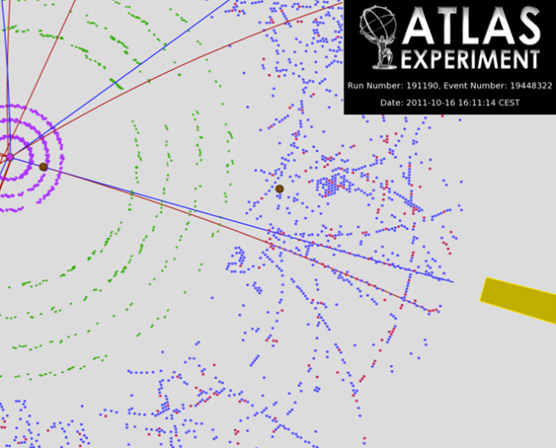Tests of the Standard Model

Pic 1. Standard Model of elementary particle physics
Standard Model (SM) - theoretical framework in elementary particle physics. It describes electromagnetic, weak and strong interactions of all elementary particles. Experimental confirmation of the intermediate vector bosons existence in the mid-80s completed the construction of the SM and its adoption as a basic working model. Necessity of a minor model expansion originated in 2002 after the discovery of neutrino oscillations. Confirmation of the Higgs boson existence (the corner-stone of the SM) in 2012 has completed the experimental observation of elementary particles predicted by this model.
However, SM tests at the largest modern experimental installation of high energy physics (Large Hadron Collider) and its experiments (ATLAS etc.) are very important tasks because deviations from its predictions indicate new phenomena beyond SM.
MEPhI group in collaboration with groups of University of Science and Technology of China (Hefei, China) and LPNHE (Paris, France) has developed a methodology to measure the efficiency of the photon identification from data on the basis of "tagged" photons from the three-particle decay Z→l+l-γ. It allows to significantly improve photon identification in the ATLAS experiment. This work is one of the basic ones for the Higgs boson search and study in the diphoton decay channel.
Studies of the converted photons registration efficiency and identification also have very big importance since these photons constitute a significant part of statistics.
Investigations of photon identification are continuing in terms of preparation to the LHC operation with increased center of mass energy (13-14 TeV).

Pic 4. Difference between efficiency from data and simulation . It defines the uncertainty from photon identification in the ATLAS experiment
Publications:
- ATLAS Collaboration; Measurements of the photon identification efficiency with the ATLAS detector using 4.9 fb-1 of pp collision data collected in 2011, ATLAS-CONF-2012-123
- Soldatov, E; Photon identification efficiency measurement in ATLAS experiment and its application to the H→γγ analysis, ATL-PHYS-PROC-2013-131
Besides, members of our department in collaboration with colleagues from the Argonne National Laboratory (Chicago, USA), Southern Methodist University (Dallas, USA) and Duke University (Durham, USA) are investigating another area of the SM electroweak sector. These studies involve cross-section measurements of events with Z boson and photons, as well as limits on the gauge bosons interaction anomalous vertices. The study of these processes using the invisible decay of the Z boson to neutrinos is currently the subject of several dissertations in the group.
High accelerator luminosity allows to move to increasingly rare events. For instance, 2012 data allowed to start a study of the Z boson associated production with two photons and hence anomalous quartic gauge couplings aQGC (along with the already studied triple aTGC). These studies along with the Standard Model confirmation also provide an opportunity to discover evidence of the existence of new physics beyond the SM.

Pic 6. Study of the
(Z→ )+γ process study: comparison between data and simulation in terms of photon transverse energy
)+γ process study: comparison between data and simulation in terms of photon transverse energy
Publications and papers:
- ATLAS Collaboration; «Measurement of Wgamma and Zgamma production in proton-proton collisions at vs=7 TeV with the ATLAS Detector», J. High Energy Phys., 09: 072, 1-41 (2011);
- ATLAS Collaboration; «Measurement of Wgamma and Zgamma production cross section in pp collisions at vs=7 TeV and limits on anomalous triple gauge couplings with the ATLAS detector», Phys. Lett. B 717, 1-3, 49-69 (2012);
- ATLAS Collaboration; «Measurements of Wgamma and Zgamma production in pp collisions at vs=7 TeV with the ATLAS detector at the LHC», Phys. Rev. D 87, 112003, 1-40 (2013)
- ATLAS Collaboration; «Measurements of Zγ and Zγγ production in pp collisions at √s=8 TeV with the ATLAS detector», Phys. Rev. D 93, 112002 (2016)
Contact Person:
Soldatov Evgeny







